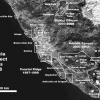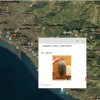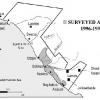Description
The Rough Cilicia Survey Project Study Collection was created by Richard M. Rothaus of St. Cloud State U. in 1997. The purpose was to bring order to the large scale grab collections being processed by the survey team in 1996-97. The process of selection for the Study Collection is described in the accompanying publication N. K. Rauh and R. Rothaus, “Caveat Emptor: Collecting and Processing Pottery in Western Rough Cilicia?” Old Pottery in a New Century. Innovating Perspectives on Roman Pottery Studies, ed. J. Lund, J. Poblome, D. Malfitana, Rome: L’Erma di Bretschneider, 2006, pp. 347-362. Organizing the collection according to "Rothaus Numbers," Richard assembled most of the Study Collection from the ceramics grab collections that the team assembled at the large urban sites along the coast (Laertes, Iotape, Selinus, Kestros, Nephelion, and Antiochia ad Cragum). Drawings were commenced by Ankara University student, Betul Sahin, and descriptions by Jason DeBlock and Nicholas Rauh of Purdue University. At the end of the 1997 season, Kathleen W. Slane of the University of Missouri at Columbia visited the survey headquarters to review the work and made some valuable additions, revisions, and emendations. Since its inception the RCSP Study Collection has been safely stored in the Alanya Archaeological Museum. We express our gratitude to Ismail Karamut and Seher Turkmen of the Alanya Museum for their long-standing support of the project.
The survey team has relied on the Study Collection to identify ceramic materials encountered in the field. From 1999 – 2011, Rauh, team collaborator Matthew Dillon of Loyola Marymount U., and numerous student participants devoted countless hours photographing, measuring, Munselling, revising, and conserving the collection. Rothaus revisited the survey in 2001, and incorporated several new forms into the collection. That season E. Lyding Will of U. Massachusetts at Amherst also made important contributions to our understanding of the amphora remains. John Lund and Tamar Hodos also visited briefly and offered important recommendations. Kim Leaman of Purdue University spent several seasons revising and expanding our set of profile drawings. Most of the drawings in the collection are Leaman’s, in fact. In 2005, Rothaus made one final visit to the survey and added several new items to the collection from the survey materials of the Adanda Canyon and Bickici Highland phase of the survey (2000-2004). He was assisted by illustrator Burhan Süer from Bilkent U. in Ankara. In 2008 Caroline Autret of the U. Paris-Sorbonne, joined the team and greatly enhanced our understanding of locally produced amphoras. Since 2015, H. Asena Kızılarslanoğlu of Ahí Evran University in Kırşehir has worked diligently with Rauh to complete the profile drawings. In addition, dozens of Purdue University undergraduate students have also spent years scanning the photographic images and profile drawings seen here.
The collection consisting of some 339 sherds representing 190 identified forms. Each item furnishes ceramic classification, typology and form identification, approximate use chronology, detailed find location (including coordinates), sherd and fabric descriptions, measurements, Munsell coloration, images, and profile drawing. For imported and locally produced wares that were wide distributed, we furnish published comparanda where possible. An attached Code Book defines all the column headings; the attached article Caveat Emptor: Collecting and Processing Pottery in Western Rough Cilicia? (sc_caveat_emptor.pdf) explains the selection process for the Study Collection and the portfolio of ceramics processing methodologies we employed in the field.
Content List
Fragments of Coarseware from the Rough Cilicia Survey Pottery Study Collection (v1.0)
This dataset is contains coarseware form the Rough Cilicia Survey Pottery Study Collection, a collection of more than 300 useful diagnostic sherds of the most commonly observed forms of the region.
Fragments of Commonware from the Rough Cilicia Survey Pottery Study Collection (v1.0)
This dataset is contains images and descriptions of commonware form the Rough Cilicia Survey Pottery Study Collection, a collection of more than 300 useful diagnostic sherds of the most commonly observed forms of the region.
Fragments of Cookware from the Rough Cilicia Survey Pottery Study Collection (v1.0)
This dataset is contains images and descriptions of cookware form the Rough Cilicia Survey Pottery Study Collection, a collection of more than 300 useful diagnostic sherds of the most commonly observed forms of the region.
Fragments of Domestic Amphoras from the Rough Cilicia Survey Pottery Study Collection (v1.0)
This dataset is contains images and descriptions of domestic amphoras form the Rough Cilicia Survey Pottery Study Collection, a collection of more than 300 useful diagnostic sherds of the most commonly observed forms of the region.
Fragments of Fineware from the Rough Cilicia Survey Pottery Study Collection (v1.0)
This dataset is contains images and descriptions of fineware form the Rough Cilicia Survey Pottery Study Collection, a collection of more than 300 useful diagnostic sherds of the most commonly observed forms of the region.
Fragments of Imported Amphoras from the Rough Cilicia Survey Pottery Study Collection (v1.0)
This dataset is contains images and descriptions of imported amphoras form the Rough Cilicia Survey Pottery Study Collection, a collection of more than 300 useful diagnostic sherds of the most commonly observed forms of the region.
Fragments of Lamps and other Artefacts from the Rough Cilicia Survey Pottery Study Collection (v1.0)
This dataset is contains images and descriptions of lamps and other artefacts from the Rough Cilicia Survey Pottery Study Collection, a collection of more than 300 useful diagnostic sherds of the most commonly observed forms of the region.
Videos Documenting Fragments from the Rough Cilicia Survey Pottery Study Collection (v1.0)
This dataset contains videos of visual presentations of some of the stored fragments of the Rough Cilicia Survey Project Ceramics Study Collection, a collection of more than 300 useful diagnostic sherds of the most commonly observed forms of the...
Cite this work
Researchers should cite this work as follows:
- Autret, C.; Kızılarslanoğlu, A.; Dillon, M.; Pejša, S.; Rauh, N. K.; Rothaus, R. M. (2018). Fragments from the Rough Cilicia Survey Pottery Study Collection. Purdue University Research Repository. doi:10.4231/R7RV0KX7
Tags
Rough Cilicia Archaeological Survey Project
This publication belongs to the Rough Cilicia Archaeological Survey Project group.



